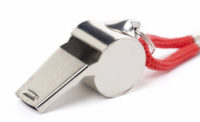Will workers resist, due to privacy concerns, using wearables that capture a workers’ vitals?
Carina Santos, CEO, Logical Safety: Privacy concerns are at the tip of many peoples tongues at the moment. However, I don’ t expect resistance once the value of data driven safety systems are understood. You can personalize safety to the needs and limits of each worker — the individual variation in response to stressors. You can build a personalized risk profile for each worker ensuring they never exceed their physical limits.
Will workers resist individualized tracking due to "Big Brother" fears?
Santos: Data monitoring is intended specifically for use in high-risk tasks such as work in confined spaces, work at height or in lone working situations where stress may affect safety performance. This limits the extent to which a would-be-Orwellian company can monitor its workers. Systems are designed to limit the personal insight a company can harvest on its workers, so that intimate details such as health conditions cannot be guessed from analysis.
What is the business case for investing in safety technology?
Santos: With the right safety technology managers can gain hugely valuable insight that can be used to define best practices, improve performance, reduce costs and eventually lead to productivity increases.
Companies use technology to reduce their insurance policy spend by ten-fold. Fewer incidents and rigorous data to prove it makes it in the best interest of both companies to come to an agreement.
Ultimately, the question of convincing upper management to invest in safety technology depends on how deep safety managers look to their own role and the impact they can cause in the organization.
Explain how artificial intelligence, wearables, augmented reality and IoT will create safer workplaces.
Santos: Safety is a human discipline. Understanding the human at the center of improving safety and productivity requires us to recognize that we make mistakes; we have limits; and often make irrational decisions.
New technology compensates for these limitations; they can “super-charge” workers, helping them to perform more safely and productively. “The world in the palm of your hands” expresses very well what technology can do for us including on safety.
What are some tech parameters used for worker and operational health?
Santos: For example during work at height, in remote locations or confined spaces technology monitors ambient temperatures and pressures; relevant safety documentation such as risk assessments and procedures, asset status, staff training records, required tools, PPE condition and inspections. If something is out of place, the system blocks permission and automatically informs management.
You can monitor and take full control of the lockout process including the stored energies and release procedures, document compliance, risk assessments, operational procedures and lot more.
For equipment, you can obtain a complete directory of asset profiles, allowing for condition to be monitored, registered and linked to special risks or operational requirements.
You can also detect and get reports on falls as well as a range of health, geospatial and kinetic data. For vehicles you can combine all the features described above with an anti-collision system that prevents the most common cause of emergency and reports on near misses. The same system controls vehicle inspections and safety compliance, integrates GPS and an SOS emergency service.
All these parameters can be assessed at any time, from anywhere, and all data in its most tiny detail is malleable to statistical analysis and reporting.
What are "errors of ineptitude"?
Santos: In his book, the Checklist Manifesto, Atul Gawande, MD, makes a distinction between “errors of ignorance” (mistakes we make due to a lack of knowledge) and “errors of ineptitude” (mistakes made due to applying that knowledge poorly). For much of human history, the former have been by far the most prevalent.
But today there is more to know, more to manage, more to remember and more to go wrong. We are all equally prone to these mistakes and training isn’ t necessarily a solution. As Atul and others have shown some of the most highly trained professionals (surgeons and pilots), are equally prone to these errors your average Joe.
What is a “challenge-response” checklist?
Santos: In its most basic form it is one person presenting an item and another person providing an answer that describes the condition or status of that item. The idea is to consistently verify the correct status, ensuring critical steps of a task are completed before progression.
In operating theatres, pre-surgical checklists reduced mortality rates by up to 60 percent. In aviation they have led to steady declines in pilot-error.
We use a mobile app to support lockout procedures. Lockout processes are simplified (reducing the risk of “errors of ineptitude”) through automatic retrieval of safety information critical for task safety, such as PPE condition, asset status and training history. Next, the application guides users through the critical steps of the lockout process ensuring no steps are missed and blocking task access until safety criteria are met.
Will safety technology enable organizations to operate safety departments with fewer staff?
Santos: There is a strong argument to make that technology leads to the displacement of jobs rather than replacement. Take for example the agricultural revolution of the last few hundred years due to mechanization. Fewer people work in agriculture than before but the concomitant advances in technological created software engineers, factory workers and graphic designers.
The current revolution in safety is the same as that in agriculture of a hundred years ago. We may reduce the need staff for safety walkarounds and reporting but new needs arise for data scientists, software developers and managers who can think about safety in a creative way.



